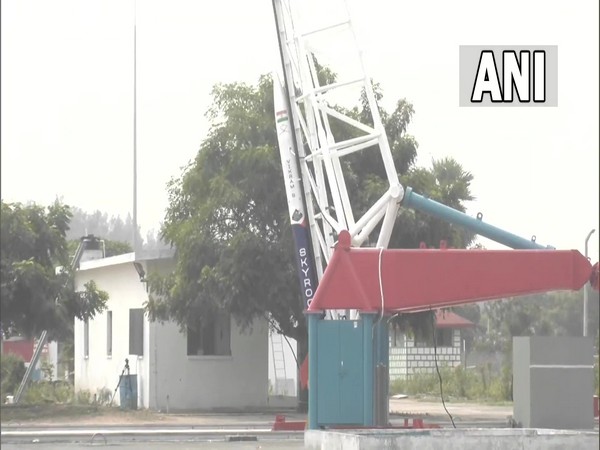Vikram-S, India’s first-ever privately developed rocket successfully lifted off from the Sriharikota spaceport on Friday morning.
The lift-off of the Vikram Suborbital rocket took place at 11:30 am from the Satish Dhawan Space Centre at Sriharikota.
“Mission Prarambh is successfully accomplished. Congratulations” tweeted the Indian Space Research Organisation ISRO and tagged @SkyrootA Congratulations India! @INSPACeIND
The ‘Prarambh’ mission and the Vikram-S rocket have been developed by Skyroot Aerospace start-up in Hyderabad with support from ISRO and IN-SPACe (Indian National Space Promotion and Authorisation Centre). The rocket is carrying payloads of two Indian and one international customers into space.
“89.5 Kms peak altitude achieved. Vikram-S rocket meets all flight parameters. It’s history in the making for India. Keep watching,” Skyroot Aerospace tweeted attaching a YouTube link of the flight
Union Minister Jitendra Singh, on Friday, arrived at Sriharikota for the grand launch of ‘Vikram S’.
Taking to Twitter, Jitendra Singh shared a picture with the team members of Skyroot Aerospace which he captioned, “With #StartUp Team “Skyroot Aerospace” at #Sriharikota, minutes before the launch of the first-ever private Rocket, Vikram-S, named after Vikram Sarabhai, the founding father of India’s Space program. Countdown begins!.”
‘Vikram-S’ is named after Vikram Sarabhai, the founding father of India’s Space Program.
The ‘Prarambh’ mission and the Vikram-S rocket have been developed by Skyroot Aerospace in Hyderabad with support from ISRO and IN-SPACe (Indian National Space Promotion and Authorisation Centre). The rocket is carrying payloads of two Indian and one international customers into space.
With the groundwork starting around late 2020, Vikram-S has been developed within a record time of two years which is powered by solid fuelled propulsion, cutting-edge avionics, and all carbon fiber core structure, as per Skyroot Aerospace.
The Vikram-S will help test and validate the majority of the technologies in the Vikram series of orbital class space launch vehicles, including many sub-systems and technologies that will be tested across the pre-lift off and post-lift off phases of the launch, according to Skyroot Aerospace.
Vikram S is among one of the first few all-composite space launch vehicles, which is made up of 3D-printed solid thrusters for its spin stability.
As per Skyroot Aerospace, with a body mass of 545 kgs, length of 6m, and diameter of 0.375 meters, Vikram-S is the quickest and most affordable ride to space. (ANI)
Read More: http://13.232.95.176/

